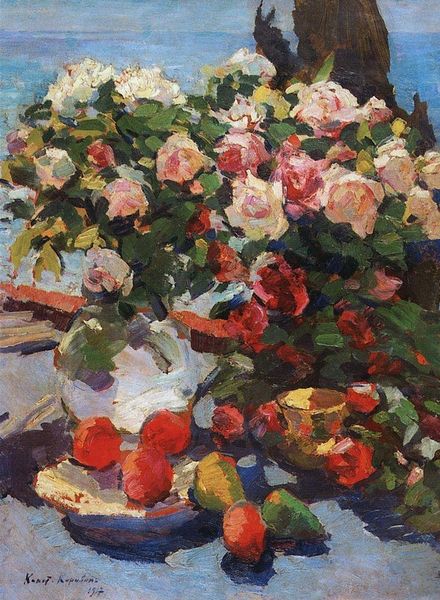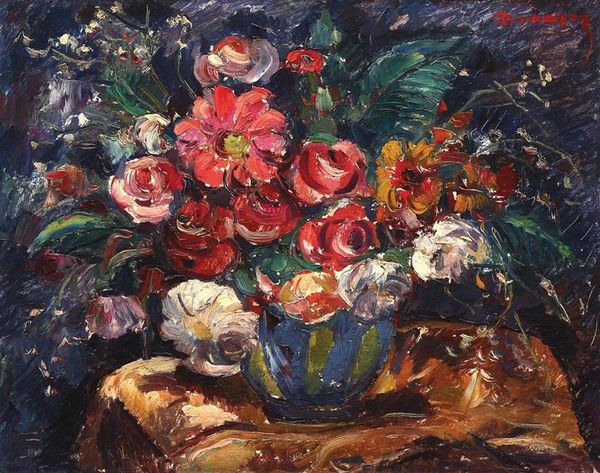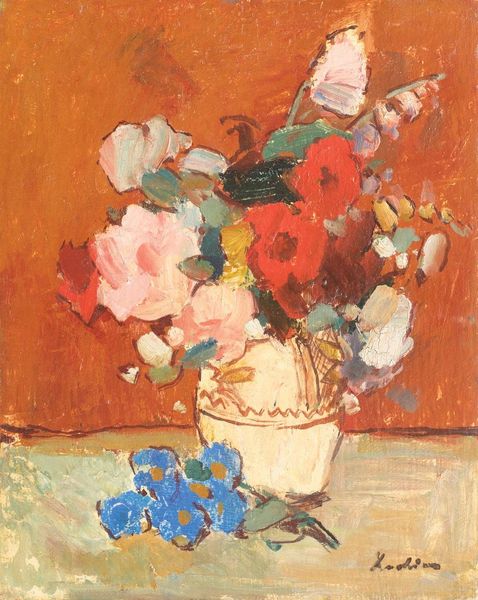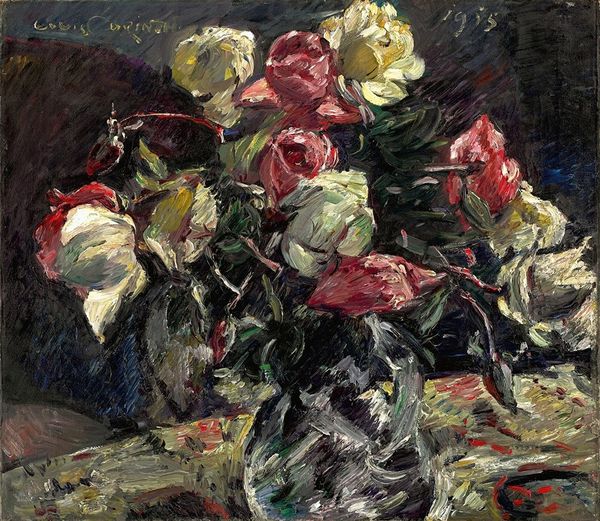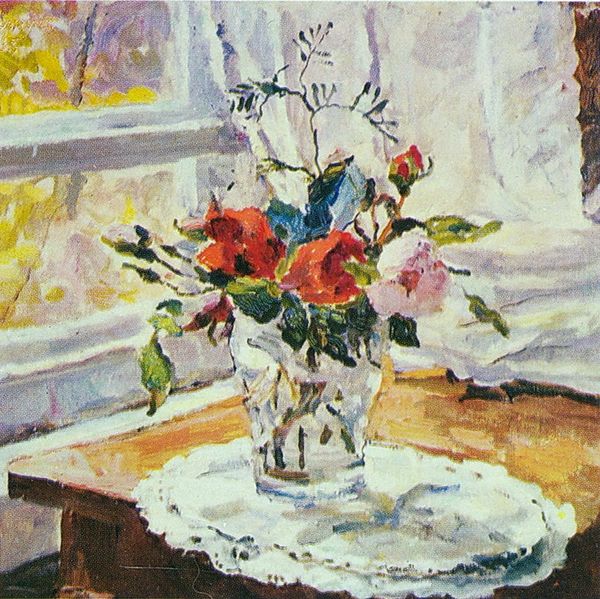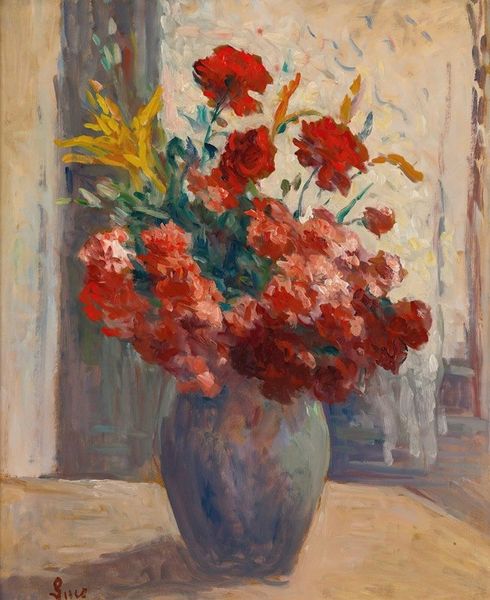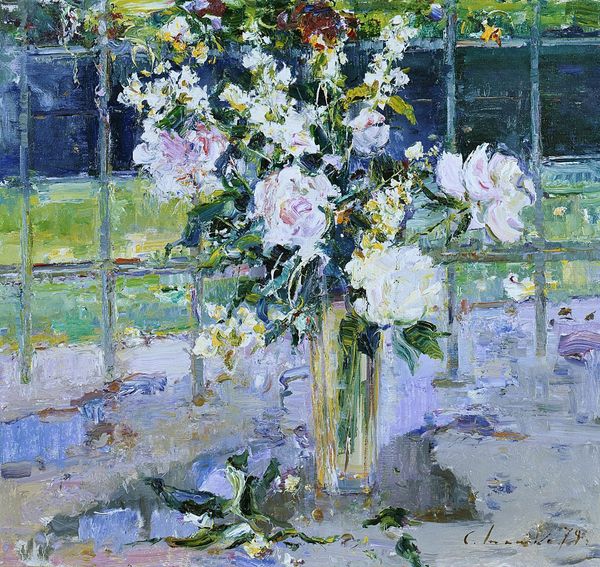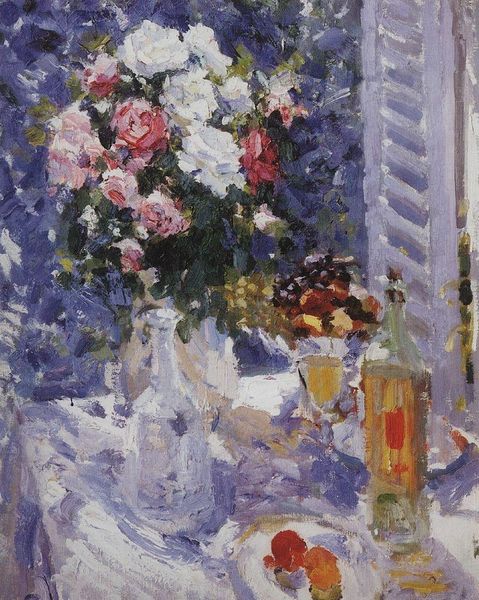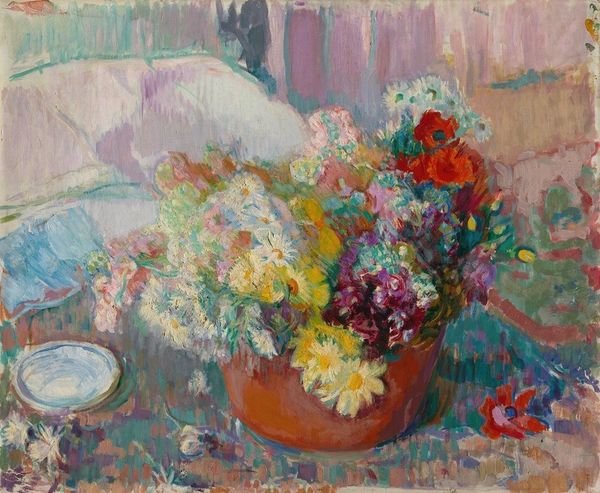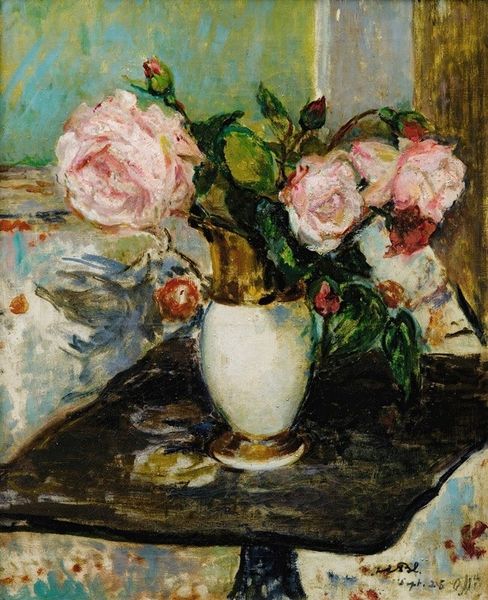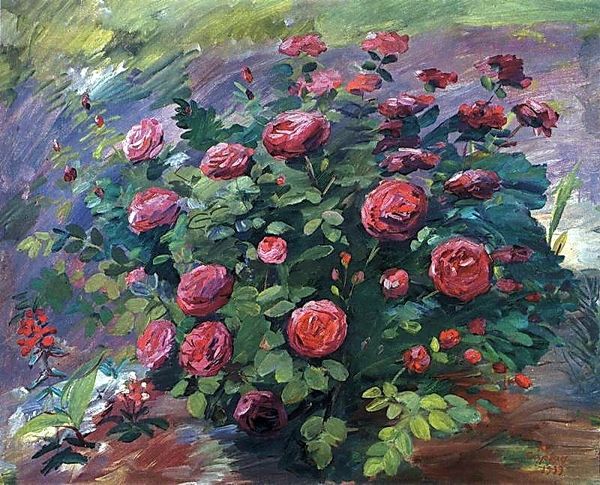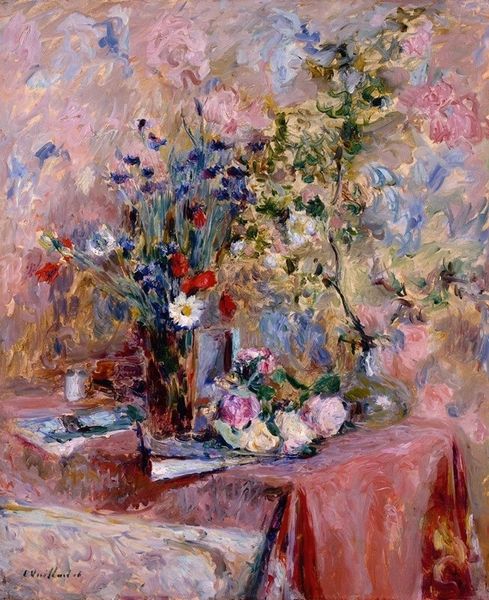
Copyright: Public domain
Konstantin Korovin captured these roses in a painting, at an unknown date. Here, roses burst forth, symbols laden with centuries of meaning. Traditionally, the rose signifies love, beauty, and transience. The red roses evoke passionate love and sacrifice, while white roses symbolize purity. This duality isn't merely aesthetic; it speaks to a profound emotional complexity, reminiscent of the 'anima' and 'animus' described by Jung. These roses, so carefully arranged, echo the floral motifs found in ancient Minoan frescoes and Renaissance portraits alike. Think of Botticelli's Venus, surrounded by roses as she emerges from the sea, an image of divine beauty and love. Note how the rose has been passed down through history, shifting in meaning. In Victorian times, the language of flowers became a complex code, each hue expressing a different sentiment. As we contemplate Korovin's roses, consider how they connect to our collective memories. The transient beauty of flowers engages viewers on a deep, subconscious level. It is a cyclical progression, resurfacing, evolving, and taking on new meanings in different historical contexts.
Comments
No comments
Be the first to comment and join the conversation on the ultimate creative platform.
